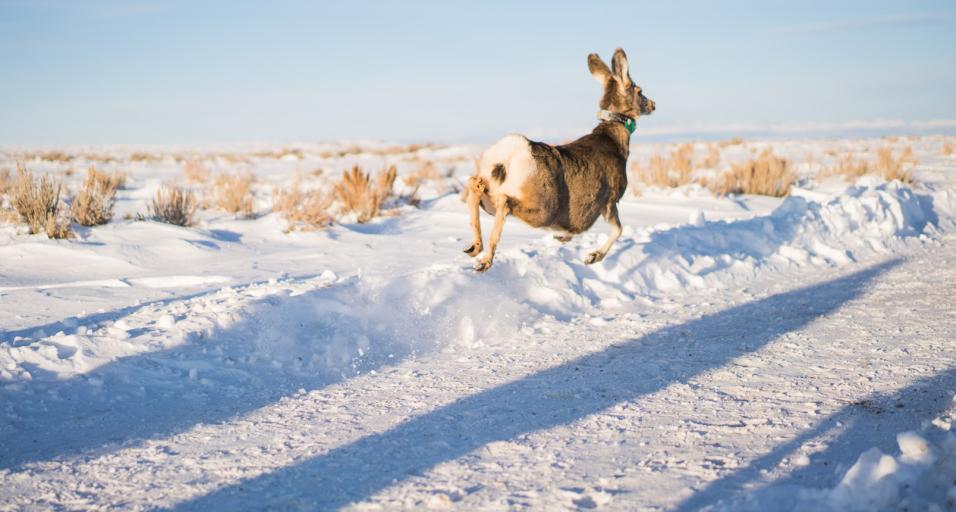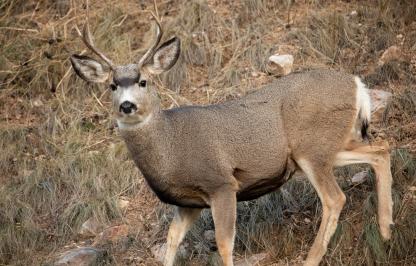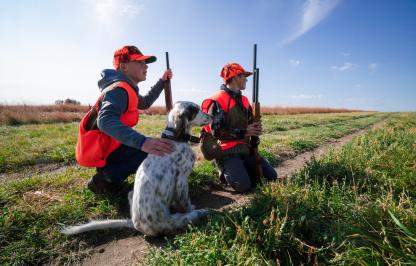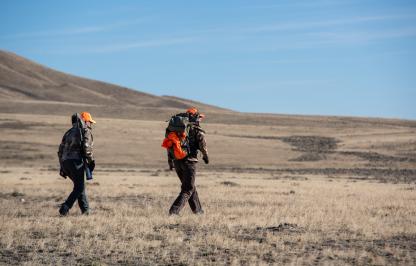Wyoming Game and Fish Department wildlife managers completed an aerial population survey of the renowned Wyoming Range mule deer herd, and now have a better understanding of how the 2022-23 severe winter impacted the population. Wildlife biologists estimate the current herd number to be about 11,000 animals — a considerable decline from the February 2023 estimate of 30,000 individuals.
“Game and Fish biologists and wardens wouldn’t typically conduct intensive aerial surveys two years in a row due to the high costs and flight time involved,” Wyoming Game and Fish Department Deputy Chief of Wildlife Doug Brimeyer said. “However, given the unprecedented winter of 2022-23, regional managers decided it was important to obtain an accurate and full picture of this herd’s population.”
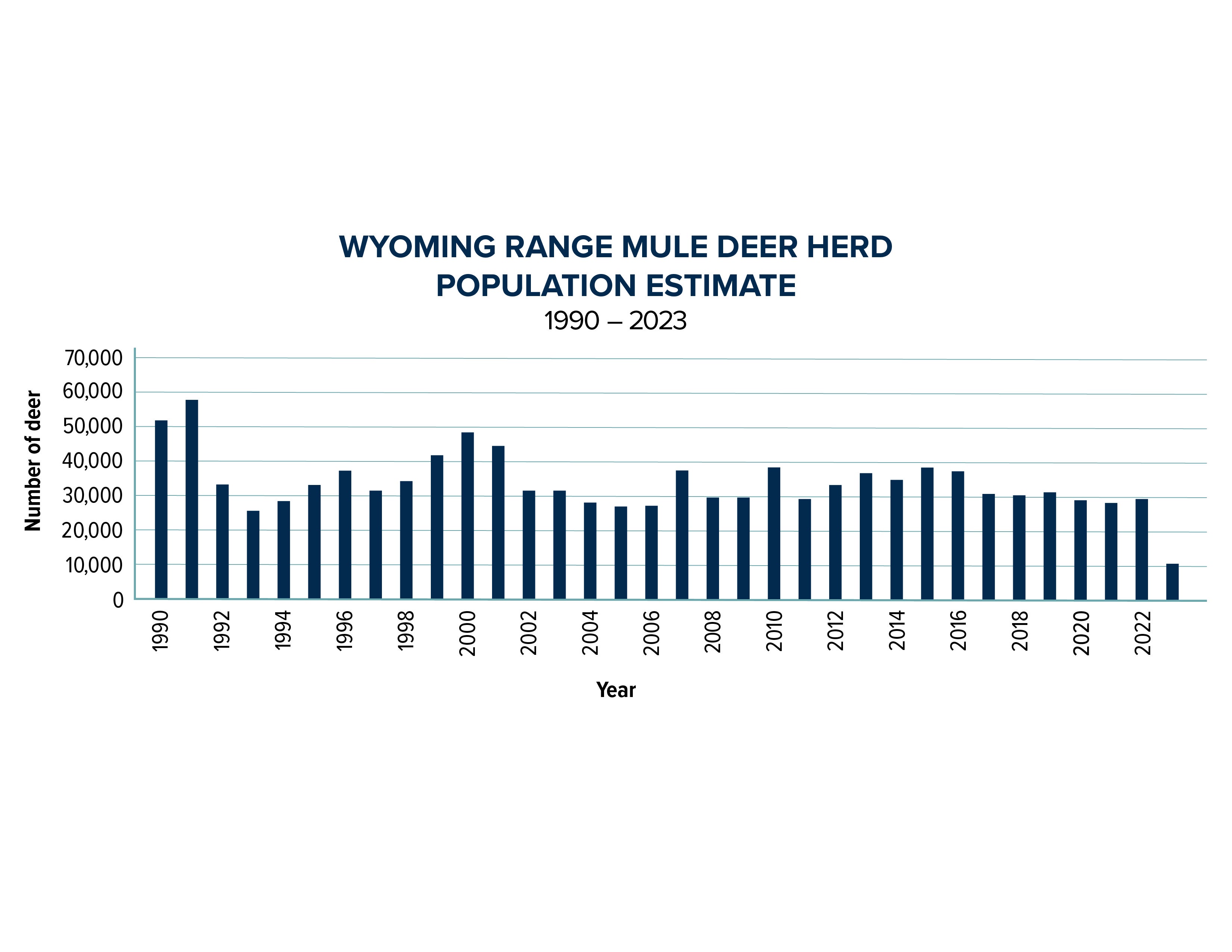
Earlier this winter, biologists and game wardens recorded classification data for the Wyoming Range deer herd by flying over portions of winter ranges in a helicopter and tallying the number of observed fawns, does, yearling bucks and adult bucks.
Results from the classification survey indicate the fawn ratio for the deer herd was 34 fawns for every 100 does — the lowest on record since the herd was designated in 1982. Low fawn ratios can be attributed to the intense energy demands of a harsh winter.
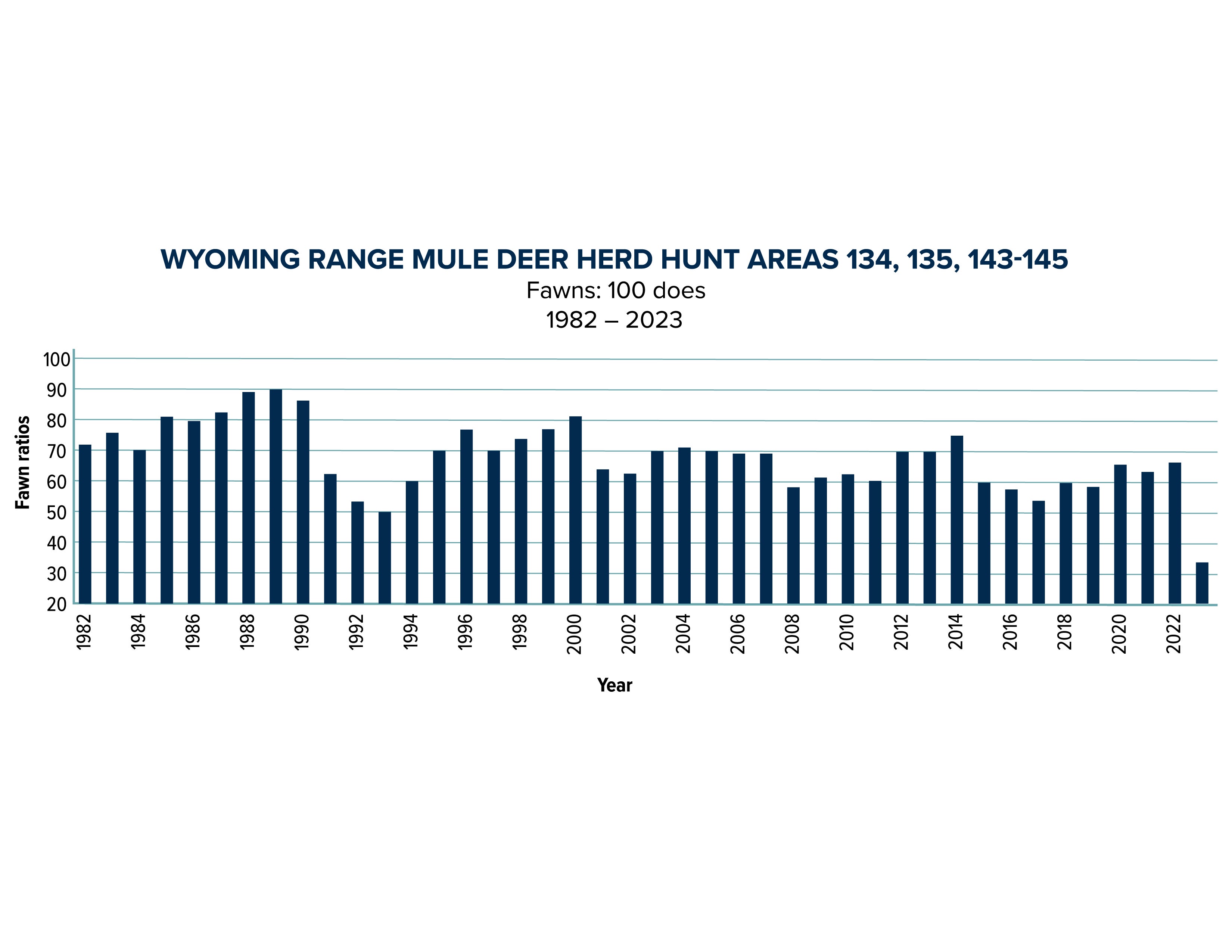
“When doe deer are stressed due to severe winter conditions, they may experience decreased reproductive success that leads to lower conception rates and reduced survival rates of fawns born shortly after the winter,” said Wyoming Game and Fish South Jackson Wildlife Biologist Gary Fralick. “The lost fawns will result in a shift in the age structure of the population.”
The buck ratio was observed to be 24 bucks for every 100 does, which also is one of the lowest on record. Wildlife managers observed low yearling buck numbers, which can be attributed to the high mortality of buck fawns that came into the 2022-2023 winter. This herd is managed toward a buck ratio objective of 30-45 bucks per 100 does.
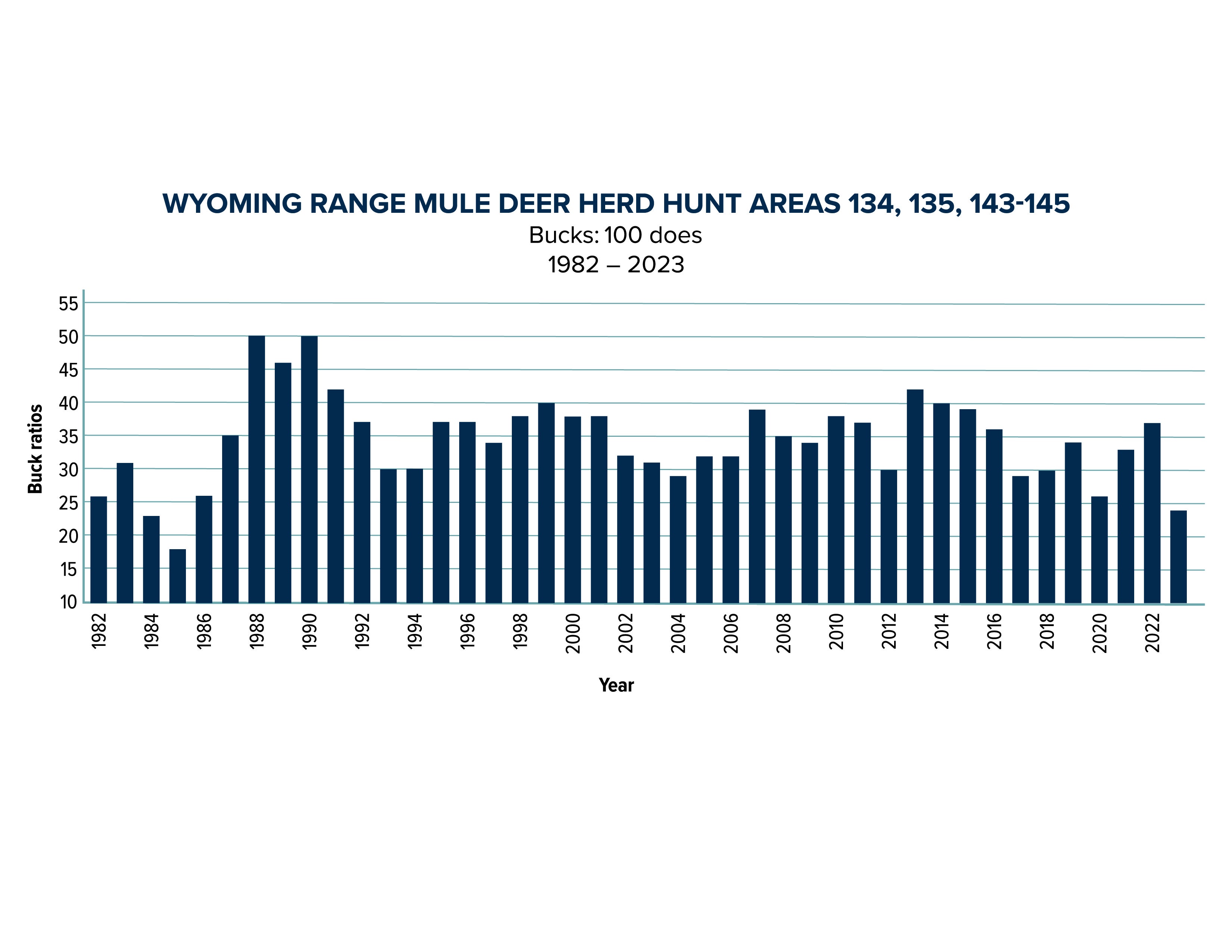
For the animals that did survive last year’s hard winter, there was abundant forage and less competition. Overall shrub growth was very good this past summer, which was expected given the amount of moisture received. Shrub leader growth from plants like mountain mahogany, sagebrush and bitterbrush was approximately double the average across winter ranges for both the Wyoming Range and Sublette mule deer herds.
The abundance of forage was evident in deer captured by University of Wyoming researchers led by Dr. Kevin Monteith. Deer captured had the highest fat levels since 2013 when the long-term study began.
“The high fat levels are a result of increased forage production, fewer deer on the landscape and many does being liberated from rearing fawns — all of which contribute to allowing deer to store more fat coming into winter,” Fralick said.“This year the winter ranges have received below-average snow, allowing animals to easily access abundant forage.”
Recovery of the Wyoming Range mule deer herd will depend on a multitude of factors, but the most important factor will be Mother Nature. Consecutive years of favorable weather patterns will be critical components for the deer herd’s recovery.
On a brighter note, the adjacent Sublette mule deer herd was not affected as strongly by the severe winter of 2022-23. Classification flights indicated total buck ratios of 34 for 100 does, and fawn ratios of 60 for 100 does. The buck and doe ratios were lower than average, but expected after a harsh winter.
“Investing in quality habitat is key and allows us to build resilient ecosystems. The most important thing we can all do to help wildlife survive and recover from tough winters is to protect and enhance their habitat and connectivity between seasonal ranges,” Brimeyer said. “The Wyoming Game and Fish Department and partners are committed to the recovery of the Wyoming Range mule deer herd and support projects that reduce deer-vehicle collisions, control cheatgrass, manage predators and facilitate movement across important habitats.”

